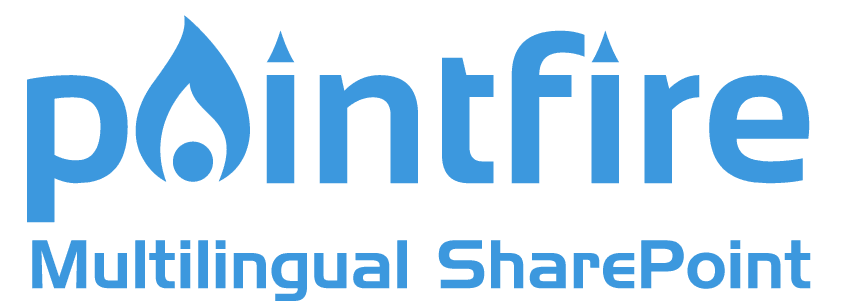SharePoint currently supports 50 languages. Microsoft used to say it supported 51 languages, but two of the versions of Serbian (Latin) were the same, and in 2020 they updated their language codes for Serbian to a more current standard, bringing the count down to 50.
Until recently we used to say that the PointFire Translator supports all 50 SharePoint languages except for a few and that really bugged us. No longer! With the addition of support for Basque and Galician, there is no longer any "except". PointFire Translator now supports all 50 languages that SharePoint recognizes, plus over 60 more languages, everything from Afrikaans to Zulu.
Did you know that Spanish is not the only official language of Spain? There are four major languages that are co-official languages plus some variants of them. Spanish, or more specifically Castilian, is the most common one, spoken throughout the country. In the middle ages Castilian was spoken mainly in the small northern Kingdom of Castile, but as the kingdom grew and merged with its neighbors, Castilian gradually replaced most of the other Latin-based languages in Spain, to the point that it became known as "Spanish". In South America, the language was introduced long before the time that the language changed its name to "Español", so in many South American countries it is still called "Castellano".
The other major languages of Spain are Catalan, Galician, and Basque. Of these, Catalan and Galician are also Latin-based languages. Catalan translation has been available for many years. There is a high demand for it. But as the teams at Microsoft Research and Azure Cognitive Services brought out new languages every few months, Galician, and Basque were late to arrive. Galician was because there are not a lot of corpora of translated documents available, and those are translated to and from Spanish not English, so it had to wait for technology to catch up. Basque does have quite a lot of translated documents, in Spanish and in French and others, since it is an official language of Basque Country, the larger part of which is in Spain, with the northern part in France. The problem with Basque is that it is a language isolate, meaning it is not related to any other language. It is not part of the larger Indo-European language family, nor any other language family. It is the only language isolate spoken in Europe. That makes it difficult to translate, when it has little in common with any other language.
In mid April 2022, the long wait was over. PointFire already had the language codes ready to go, so as soon as Azure Cognitive Services rolled out the new version, PointFire Translator started using it. So now there is no longer any language that PointFire 365 will support but only if you translate it manually, every SharePoint language can now be translated with PointFire Translator.
In case you're a language nerd like us, here's the full list, with SharePoint languages highlighted in teal:
- Afrikaans
- Albanian
- Amharic
- Arabic
- Armenian
- Assamese
- Azerbaijani
- Bangla
- Bashkir
- Basque
- Bosnian
- Bulgarian
- Cantonese (Traditional)
- Catalan
- Chinese (Literary)
- Chinese Simplified
- Chinese Traditional
- Croatian
- Czech
- Danish
- Dari
- Divehi
- Dutch
- English
- Estonian
- Faroese
- Fijian
- Filipino
- Finnish
- French
- French (Canada)
- Galician
- Georgian
- German
- Greek
- Gujarati
- Haitian Creole
- Hebrew
- Hindi
- Hmong Daw
- Hungarian
- Icelandic
- Indonesian
- Inuinnaqtun
- Inuktitut
- Inuktitut (Latin)
- Irish
- Italian
- Japanese
- Kannada
- Kazakh
- Khmer
- Klingon
- Klingon (plqaD)
- Korean
- Kurdish (Central)
- Kurdish (Northern)
- Kyrgyz
- Lao
- Latvian
- Lithuanian
- Macedonian
- Malagasy
- Malay
- Malayalam
- Maltese
- Māori
- Marathi
- Mongolian (Cyrillic)
- Mongolian (Traditional)
- Myanmar
- Nepali
- Norwegian (Bokmål)
- Odia
- Pashto
- Persian
- Polish
- Portuguese (Brazil)
- Portuguese (Portugal)
- Punjabi
- Queretaro Otomi
- Romanian
- Russian
- Samoan
- Serbian (Cyrillic)
- Serbian (Latin)
- Slovak
- Slovenian
- Somali
- Spanish
- Swahili
- Swedish
- Tahitian
- Tamil
- Tatar
- Telugu
- Thai
- Tibetan
- Tigrinya
- Tongan
- Turkish
- Turkmen
- Ukrainian
- Upper Sorbian
- Urdu
- Uyghur
- Uzbek (Latin)
- Vietnamese
- Welsh
- Yucatec Maya
- Zulu
If you have more questions, need advice or want to see a live demo, feel free to reach out to us!
